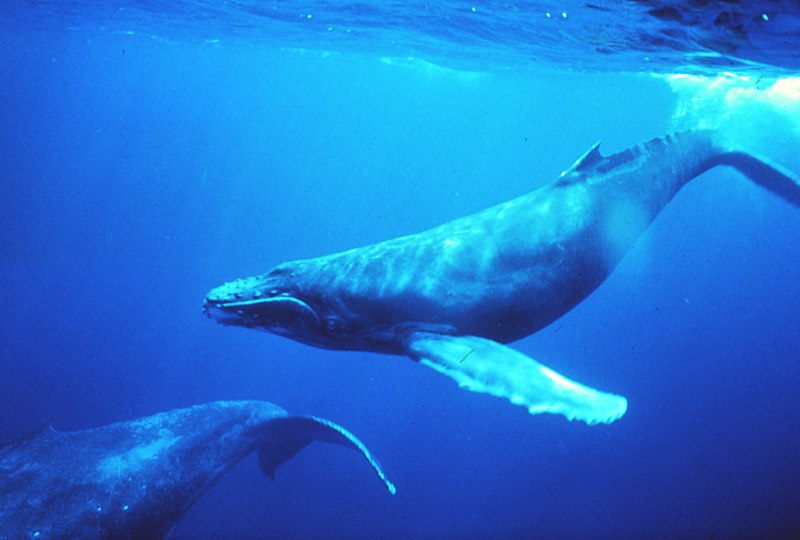This video went viral on social networks around the globe. And for good reason. How awesome to view the world through the eyes of a young humpback whale, to observe the tender interactions between mother and her calf, and especially to witness a feeding whale at such close proximity! But behind the magic conveyed by these images, there is also a research protocol aimed at better understanding the feeding behaviour of humpbacks.
A critical period for the whales
The project focuses on North Pacific humpbacks. Every winter, close to 10,000 humpback whales find themselves in the warm, relatively sheltered waters of Hawaii to give birth. For about three months, humpback mothers nurse their young while they themselves stop feeding altogether. To do so, they rely entirely on the energy reserves they accumulated the previous summer in their feeding grounds. By the end of winter, calves will need to be strong enough to keep up with their mothers on their migration to the cold, nutrient-rich waters of British Columbia, Alaska or Russia.
The calving period is therefore a particularly critical time in the life of a humpback. The survival of both mother and her offspring depends on a large number of factors, including how well the nursing goes. To document and quantify this phenomenon, which takes place out of sight under the water surface, a team of researchers from the University of Hawaii’s Marine Mammal Research Program (MMRP) has fitted seven whale calves with a “CATs Cam”-type suction cup tag equipped with a camera.
These non-invasive tags are installed from a boat using a telescopic pole. They remain attached for anywhere between 5 and 24 hours before falling off on their own, after which they are recovered at sea by the research team or by local ecotourism operators. Thanks to these tags as well as drone footage, a wealth of information has been gathered such as the frequency and duration of nursing, the speed and duration of their movements, breathing activity, etc. The camera offered us a dive into the whales’ private lives, revealing delicate maternal behaviours rarely observed so closely.
Data analysis will be carried out over the course of the next several months or even years before researchers can appreciate the full potential of what has been recorded by the tags. In addition to increasing our knowledge of the mother-calf relationship, such studies might also help better define whale protection measures at a time when these animals are particularly vulnerable.





